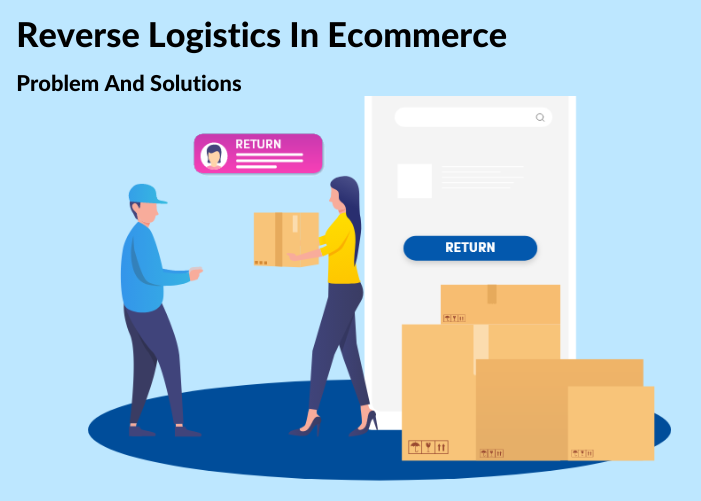Summary
As Ecommerce sales continue to climb exponentially, there is another metric that is climbing – the inevitable occurrence of order returns, replacements, and refunds!
Unless a company’s reverse logistics is set up to handle this efficiently, and with minimal cost, it will quickly become difficult to retain customers and run a profitable outfit.
Ecommerce Returns – The Last Mile Problem and How to Solve It
It should hardly come as a surprise that e-commerce sales are burgeoning in large numbers the world over.
However, a point that often gets overlooked from an overall business perspective is that the incidence of order returns, the inevitable reality of the ecommerce business, is also growing. Today, the eCommerce industry witnesses an average order-return rate of about 10–11%.
Numerous research studies have shown that about 90% of today’s consumers review the return policy of a site prior to making their decision. A satisfactory return policy gives consumers the requisite confidence before making a purchase—even before they actually review a product! Such are the times and business models we live in these days!
~ An effective way of reducing the cost of last-mile delivery due to order-returns is by using reusable packaging and returnable handling units. This saves cost, and helps you to be a responsible corporate citizen in maintaining ecological logistics practices ~
Make no mistake, it is a challenging task to build the logistical processes and systems to handle order returns, especially since it overlaps with the other most challenging part of a logistics network, i.e., last-mile delivery. However, the reverse is also true i.e. a strong return policy will help a great deal in retaining customers and achieving customer satisfaction.
Therefore, your reverse logistics today has become as important as your (outward) order-delivery mechanism since Logistics Managers have quickly realized that “delivering the product at the customer’s doorstep” isn’t always the end of the delivery loop – it is often extended!
As a result, they are now setting up their delivery network to guide the order return back to the order-fulfillment center should the customer make a request for an order return.
Quite obviously, no seller would want – or even expect – to have their order returned, but it is the inevitable truth of the online commerce world. Thus, e-commerce players have made peace with it and are now taking steps to best manage their returns and reduce the chances of it occurring in the first place.
Managing last-mile operations: a complex and expensive task.
Managing last-mile operations is complex and challenging, and when you include the added logistics of reverse logistics, it becomes even more so. There are different types of supply chains and logistics operations that last-mile functions fall under.
- B2B supply-chains: Here, last-mile logistics handles the material supply for the production process, e.g., parts and spare parts. It is also deployed to supply inventory to offline and online stores (including 3rd parties like 3PL, from where goods are moved directly to customers).
- B2C logistics: Here, last-mile delivery is responsible for the direct delivery of parcels to the end customer (for orders made online or at offline stores) or to a pickup point chosen (e.g., a common pickup location).
As you can imagine, managing reverse logistics across various types of supply chains, product types, and stakeholders can be quite a challenging task.
Reverse-logistics: how should firms handle them?
As mentioned earlier, managing order returns in the world of online retail is much more complicated as compared to an offline store. Odd though it may sound, there needs to be an equally well-planned process of reverse logistics as there is in outbound logistics! To add to this, it is a time-consuming and cumbersome process, with several elements like refunds, returned inventory management, and related checks and balances are thrown in!
Let’s look at some solutions to handle order returns and also how firms can reduce their incidence.
1) Adopting automation: To make a long story short, without the necessary automation in your logistics process—both outward and, in this case, reverse logistics—it would become impossible for logistics companies to manage delivery schedules and operations across geographies. It isn’t a simple case of a customer walking in through the door of a brick-and-mortar store to ask for a refund or exchange! With e-commerce operating 24*7 at a massive scale across global geographies, dealing with multiple tax regimes and regulations, order delivery, and reverse logistics is a complex, difficult task! Without using as much automation as is required, you will surely come up short – and, with disastrous consequences.
2) Implement dispatch software: Building on the point above, perhaps the best example of adopting automation is by implementing dispatch software.
Modern, automated dispatch software enables logistics managers to automatically optimize delivery routes by considering various elements that are important and constantly fluctuating, e.g. traffic, weather, delivery windows, etc. Importantly, it schedules routes to include both, parcel drop-off and parcel return.
Using dispatch software to manage reverse-logistics enables you to:
Quicken order-return: Dispatch software includes reverse logistics while scheduling product delivery. Therefore, it helps logistics companies by initiating the return process faster, utilizing company resources (fleet vehicles, drivers) as best as possible, and ultimately, serving customers better.
Massive data-analytical ability: Implementing dispatch software to manage your supply-chain and logistics processes brings all the eco-system stakeholders online. This, in turn, generates a lot of data, including the category of SKUs that are being returned, the reasons for returns, customer comments (etc.). The vast data-crunching ability of dispatch software gives logistics teams deep insight into the key reasons and enables them to make informed decisions.
Operate efficiently at scale: Obviously, growth and profitability are objectives of all businesses. Notably, the topmost challenges of growing retail businesses include managing their order returns. A robust dispatch software equips you to handle this with efficiency, speed, and the requisite transparency.
3) Select a 3PL equipped to handle reverse logistics: While there are several important elements that need consideration in selecting a 3PL—such as reputation, charges, geographical coverage, scale, etc.—be sure to investigate their reverse-logistics process! If not, you would have likely made a selection that could be your Achilles Heel!
3PLs with sound reverse logistics typically store the returned parcels in their 3rd-party warehouses and manage the entire order return-refund-replacement process, including inspection, re-stock, reject, refund, replace (etc.). The dispatch software they use directly influences their capabilities to do so.
While assessing their reverse-logistics capabilities, figure out some of the following:
- Does it provide return labels?
- Can it be seamlessly integrated with your existing MIS and delivery operations?
- Can it customize order returns efficiently?
As is evident from the above, a robust reverse logistics operation is critical in managing the inevitable problem of order returns. Therefore, logistics companies would do well to deploy best practices to do so, including the use of modern technology like the latest automated last mile delivery software.




